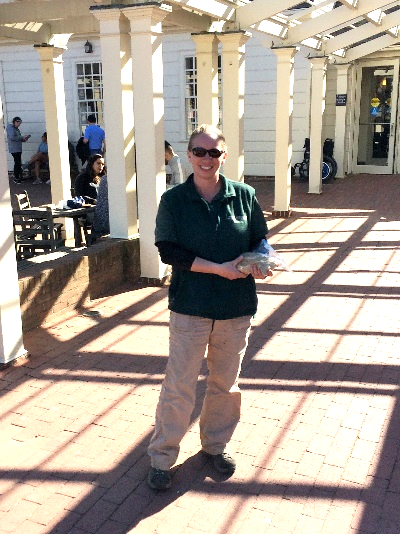This blog post is part of a series I (Richard) am writing about my past life experiences that helped develop a love and appreciation for agricultural heritage in general and landrace grains in particular. The series is called "Sickles and Sheaves - Farming, Faith, and the Frye" and you can view the other parts of this blog series here.
Our high school English teacher, Louise Braun, was a woman of prodigious intellect with expectations that students read and appreciate Shakespeare and Robert Frost with the same enthusiasm shown for sporting events. A native of tiny Viola in the Idaho-Washington Palouse borderlands, Mrs. Braun guided us on uncharted literary journeys across time and place with the peculiar incentive—highly controversial among faculty and parents, that once a week we could spend class time reading Farm Journal, Time Magazine, Field & Stream, or any other periodical of our own choosing. “Reading is the main thing,” she would say in the context of expanding young minds. In response to adolescent complaint that poetic expression in our anthology of world literature seemed as foreign as many authors, Mrs. Braun confided that poetry was commonly composed for spirited oral delivery. Soon afterward local farmer Leonard Jones arrived as a guest speaker but had undergone a stunning transformation on the school stage into Leonard Jones, country bard. “Two roads diverged in a yellow wood,” he thundered in the first dramatic recitation by an adult that I had ever heard. His delivery of “The Road Less Traveled” was made even more memorable in the knowledge that Mr. Jones was one of us, and obviously and unashamedly relished the written and spoken word. Soon Mrs. Braun had us wondering about just what Frost’s “long scythe” was “whispering to the ground” (from “Mowing”), and if “The Need of Being Versed in Country Things” might mean that mature thinking could question some assumed claims of science and religion.
FFA advisor Dan Birdsell introduced us to Demeter and the classical symbolism of ancient farm tools by having us memorize the organization’s opening ritual. As youth we may not always have understood the meaning behind these emblems, but we came to know spring from fall barley, sickles from scythes, and that a bushel of wheat weighed about sixty pounds. Mr. Birdsell also arranged to have us periodically attend local Grange meetings in the neighboring hamlet of Winona for extracurricular practice in parliamentary procedure. Members met monthly for rural fellowship and to promote agrarian interests in state and national politics, and raised the roof with the Patrons of Husbandry unofficial anthem, Knowles Shaw and George Minor’s familiar hymn “Bringing in the Sheaves” (“Waiting for the harvest, and the time of reaping….”). The organization’s official songbook, The Patron (1925), contained numerous selections commemorating the significance of field labors:
“Harvest Song”
“Grain that was in verdure waving,
Weareth now a hue of gold,
And the yellow heads are bending,
With the fruitage they hold.
That the ripened fruit be gathered,
Speed the sickle to and fro;
For the countless hosts of kernels,
Snowy loaves ere long will show.”
“Soon from out the noisy thresher,
There shall golden streams be pour’d,
That the farmer’s heart will gladden,
And shall bring his just reward.
Smiles the land today with plenty,
Plenty for the needy throng;
Let all classes and conditions,
Join to swell the harvest song.”
“The Gleaner”
“When the earth is crowned with fatness,
And the yellow harvest yields
To the sickle of the reaper,
Toiling in the sunny fields;
Mark the glad, contented gleaner,
Gather one by one her store—
Ev’ry act of cheerful labor
Makes her richer than before.”
“Golden treasures, thickly scattered,
Strew the world’s surface o’er;
Man is but a humble gleaner,
Finding knowledge, seeking more.
Step by step he plods his way,
One by one his blessings rise;
He who binds his store together,
He alone is truly wise.”













































